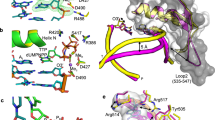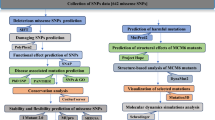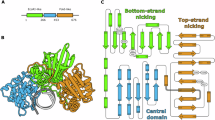Abstract
This protocol describes the syntheses and applications of two metallointercalators, Rh(bpy)2(chrysi)3+ and Rh(bpy)2(phzi)3+, that target single base mismatches in DNA. The complexes bind mismatched DNA sites specifically and, upon photoactivation, promote strand scission neighboring the mismatch. Owing to their high specificity and sequence context independence, targeting mismatches with these complexes offers an attractive alternative to current mismatch- and SNP-detection methodologies. This protocol also describes the synthesis of these complexes and their use in marking mismatched sites. Irradiation of 32P-labeled duplex DNA with either intercalator followed by denaturing PAGE allows the detection of mismatches in oligonucleotides. The protocol also outlines a method for efficient detection of single nucleotide polymorphisms (SNPs) in larger genes or plasmids. Pooled genes are denatured and re-annealed to form heteroduplexes; they are then incubated with either complex, irradiated and analyzed using capillary electrophoresis to probe for mismatches (SNP sites). The synthesis of the metallointercalators requires approximately 5–7 d. The mismatch- and SNP-detection experiments each require approximately 3 d.
This is a preview of subscription content, access via your institution
Access options
Subscribe to this journal
Receive 12 print issues and online access
$259.00 per year
only $21.58 per issue
Buy this article
- Purchase on SpringerLink
- Instant access to full article PDF
Prices may be subject to local taxes which are calculated during checkout












Similar content being viewed by others
References
Erkkila, K.E., Odom, D.T. & Barton, J.K. Recognition and reaction of metallointercalators with DNA. Chem. Rev. 99, 2777–2796 (1999).
Kielkopf, C.L., Erkkila, K.E., Hudson, B.P., Barton, J.K. & Rees, D.C. Structure of a photoactive rhodium complex intercalated into DNA. Nat. Struct. Biol. 7, 117–121 (2000).
Jackson, B.A. & Barton, J.K. Recognition of DNA base mismatches by a rhodium intercalator. J. Am. Chem. Soc. 119, 12986–12987 (1997).
Jackson, B.A., Alekseyev, V.Y. & Barton, J.K. A versatile mismatch recognition agent: specific cleavage of a plasmid DNA at a single base mispair. Biochemistry 38, 4655–4662 (1999).
Jackson, B.A. & Barton, J.K. Recognition of base mismatches in DNA by 5,6-chrysenequinone diimine complexes of rhodium(III): a proposed mechanism for preferential binding in destabilized regions of the double helix. Biochemistry 39, 6176–6182 (2000).
Modrich, P. Mechanisms and biological effects of mismatch repair. Annu. Rev. Genet. 25, 229–253 (1991).
Kolodner, R. Biochemistry and genetics of eukaryotic mismatch repair. Genes Dev. 10, 1433–1442 (1996).
Harfe, B.D. & Jinks-Robertson, S. DNA mismatch repair and genetic instability. Annu. Rev. Genet. 34, 359–399 (2000).
Modrich, P. Mechanisms in eukaryotic mismatch repair. J. Biol. Chem. 281, 30305–30309 (2006).
Kolodner, R.D. Mismatch repair: mechanisms and relationship to cancer susceptibility. Trends Biochem. Sci. 20, 397–401 (1995).
Arzimanoglou, I.I., Gilbert, F. & Barber, H.R. Microsatellite instability in human solid tumors. Cancer 82, 1808–1820 (1998).
Loeb, L.A., Loeb, K.R. & Anderson, J.P. Multiple mutations and cancer. Proc. Natl. Acad. Sci. USA 100, 776–781 (2003).
Junicke, H. et al. A rhodium(III) complex for high-affinity DNA base-pair mismatch recognition. Proc. Natl. Acad. Sci. USA 100, 3737–3742 (2003).
Syvänen, A. Acessing genetic variation: genotyping single nucleotide polymorphisms. Nat. Rev. Genet. 2, 930–942 (2001).
Hart, J.R., Johnson, M.D. & Barton, J.K. Single-nucleotide polymorphism discovery by targeted DNA photocleavage. Proc. Natl. Acad. Sci. USA 101, 14040–14044 (2004).
Pierre, V.C., Kaiser, J.T. & Barton, J.K. Insights into finding a mismatch through the structure of a mispaired DNA bound by a rhodium intercalator. Proc. Natl. Acad. Sci. USA 104, 429–434 (2007).
Mürner, H., Jackson, B.A. & Barton, J.K. A versatile synthetic approach to rhodium(III) diimine metallointercalators: condensation of o-quinones with coordinated cis-ammines. Inorg. Chem. 37, 3007–3012 (1998).
Krotz, A.H., Kuo, L.Y. & Barton, J.K. Metallointercalators: syntheses, structures, and photochemical characterizations of phenanthrenequinone diimine complexes of rhodium(III). Inorg. Chem. 32, 5963–5974 (1993).
Ferrari, M., Carrera, P. & Cremonesi, L. Different approaches of molecular scanning of point mutations in genetic diseases. Pure Appl. Chem. 68, 1913–1918 (1996).
Kwok, P.Y., Deng, Q., Zakeri, H., Taylor, S.L. & Nickerson, D.A. Increasing the information content of STS-based genome maps: identifying polymorphisms in mapped STSs. Genomics 31, 123–126 (1996).
Taillon-Miller, P., Piernot, E.E. & Kwok, P.Y. Efficient approach to unique single-nucleotide polymorphism discovery. Genome Res. 9, 499–505 (1999).
Zhou, W. Mapping genetic alterations in tumors with single nucleotide polymorphisms. Curr. Opin. Oncol. 15, 50–54 (2003).
Schork, N.J., Fallin, D. & Lanchbury, J.S. Single nucleotide polymorphisms and the future of genetic epidemiology. Clin. Genet. 58, 250–264 (2000).
Rieder, M.J., Taylor, S.L., Tobe, V.O. & Nickerson, D.A. Automating the identification of DNA variations using quality-based fluorescence re-sequencing: analysis of the human mitochondrial genome. Nucleic Acids Res. 26, 967–973 (1998).
Petitjean, A. & Barton, J.K. Tuning the DNA reactivity of cis-platinum: conjugation to a mismatch-specific metallointercalator. J. Am. Chem. Soc. 126, 14728–14729 (2004).
Schatzschneider, U. & Barton, J.K. Bifunctional rhodium intercalator conjugates as mismatch-directing DNA alkylating agents. J. Am. Chem. Soc. 126, 8630–8631 (2004).
Zeglis, B.M. & Barton, J.K. A mismatch-selective bifunctional rhodium-oregon green conjugate: a fluorescent probe for mismatched DNA. J. Am. Chem. Soc. 128, 5654–5655 (2006).
Brunner, J. & Barton, J.K. Targeting DNA mismatches with rhodium intercalators functionalized with a cell-penetrating peptide. Biochemistry 45, 12295–12302 (2006).
Hart, J.R., Glebov, O., Ernst, R.J., Kirsch, I.R. & Barton, J.K. DNA mismatch-specific targeting and hypersensitivity of mismatch-repair-deficient cells to bulky rhodium(III) intercalators. Proc. Natl. Acad. Sci. USA 103, 15359–15363 (2006).
Acknowledgements
We are grateful to the National Institutes of Health (GM33309) for their financial support. We also thank ABI for their support. In addition, we are grateful to our co-workers, J. Hart, I. Lau, V. Pierre and R. Ernst, for their help in working out experimental details.
Author information
Authors and Affiliations
Corresponding author
Ethics declarations
Competing interests
The authors declare no competing financial interests.
Rights and permissions
About this article
Cite this article
Zeglis, B., Barton, J. DNA base mismatch detection with bulky rhodium intercalators: synthesis and applications. Nat Protoc 2, 357–371 (2007). https://doi.org/10.1038/nprot.2007.22
Published:
Issue date:
DOI: https://doi.org/10.1038/nprot.2007.22
This article is cited by
-
Tuning electron delocalization of hydrogen-bonded organic framework cathode for high-performance zinc-organic batteries
Nature Communications (2023)
-
Inorganic Nanoparticles in Cancer Therapy
Pharmaceutical Research (2011)



